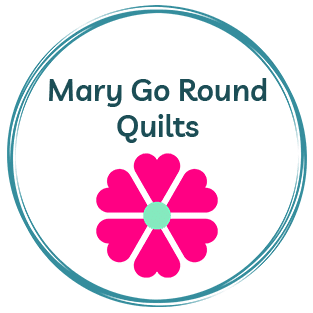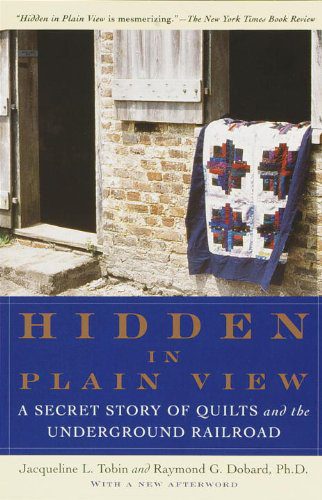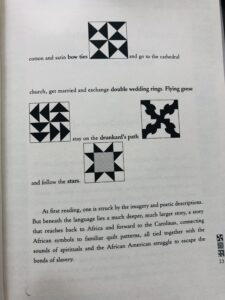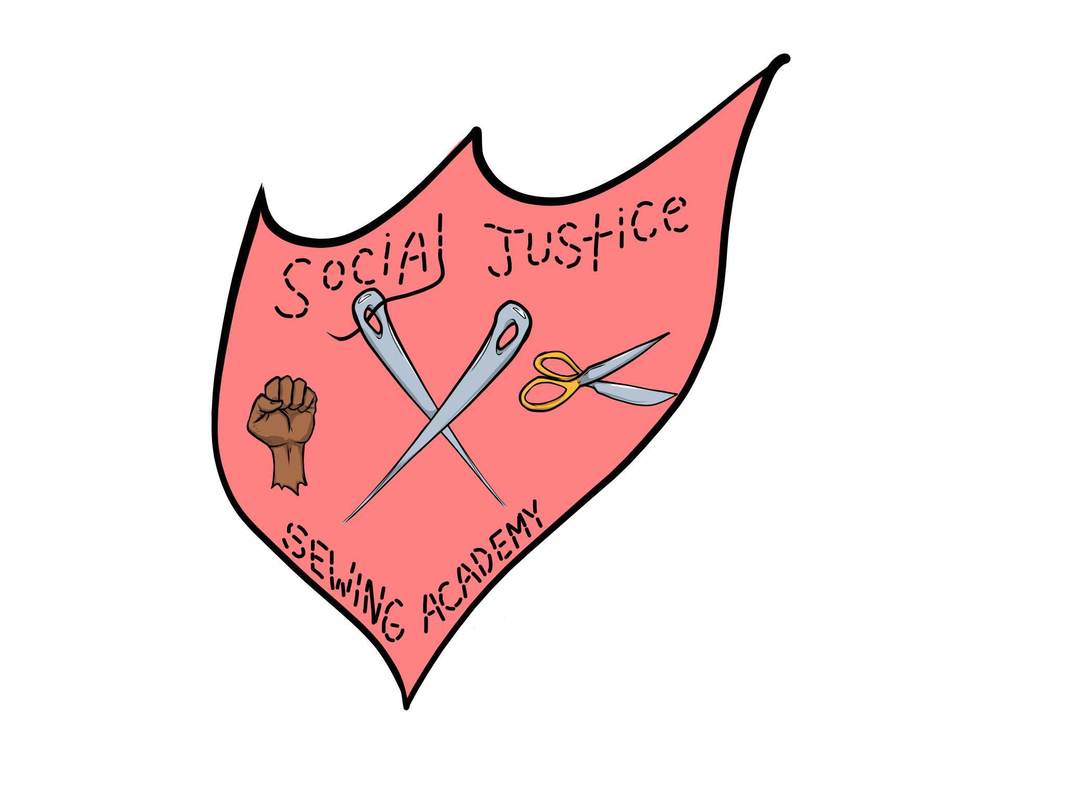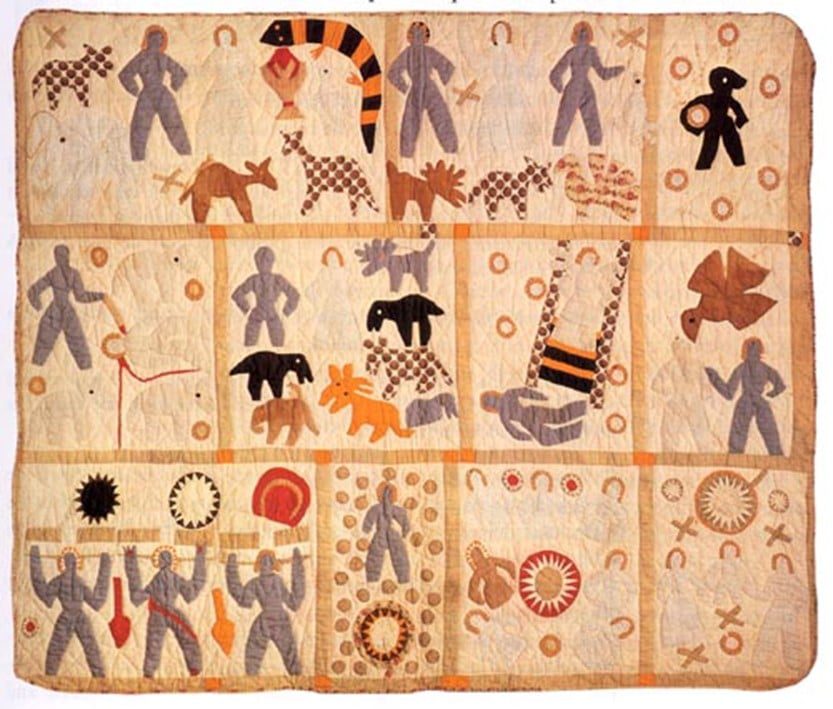I recently read the book, Hidden in Plain View. The authors of this book met with Ozella McDaniel Williams of Charleston, South Carolina in 1996 to learn the story that was passed down for generations in her family about the secret of the underground railroad quilt code. These quilt patterns were used to aid the slaves in memorizing directives before leaving the plantation to seek freedom.
According to Ozella, there were 10 quilts used to direct the slaves to take action. The quilts were placed on a fence one at a time. Because it was common practice for quilts to be aired out frequently, the master or mistress of the plantation would not be suspicious. This nonverbal communication alerted the slaves who were escaping.
The first quilt to be displayed was the Monkey Wrench. When a slave saw this pattern, they knew to gather all the tools they would need on their journey to freedom. The second quilt to be displayed on the fence was the Wagon Wheel pattern. This signaled the slaves to pack provisions for their journey, as if they were packing a wagon – meaning what was essential for survival. When the Tumbling Boxes pattern appeared, the slaves knew it was time to escape.
On their journey, the Bears Paw pattern was a visual reference reminding the slaves to follow the actual trail of the bear’s footprints. The trail would lead through the mountains. The path travelled by bears was sure to lead to food and water.
Once the slave party made its way through the mountains, they were to travel to the Crossroads, which stood for Cleveland, Ohio. Ozella thought the Log Cabin pattern might have been an actual log cabin outside of Cleveland. She also says the code might direct the slaves to actually build a log cabin to weather out the winter or establish permanent residency. The authors, however, believe the log cabin had something to do with the African belief that evil travels along straight lines. For safety, it would have been important for the slaves to travel an indirect or zigzag fashion to prevent slave catchers from predicting their path.
Ozella thought the ShooFly referred to an actual person who might have aided escaping slaves. ShooFly directed them to dress up in cotton and satin bow ties and go to the cathedral church, get married and exchange double wedding rings.
Flying Geese Pattern directed the slaves to travel north. Slaves were to take their cues on direction, timing and behavior from the migrating geese. Drunkard’s Path was a warning to move in a zig zag fashion, and to even double back occasionally on their tracks in order to elude slave catchers. The Star Block was used to direct the slaves to keep following the North star to freedom.
It is believed that in order to memorize the whole code a sampler quilt was used. The sampler would have all the blocks arranged in the order of the code. To hold the quilt layers together, the slaves tied their quilts with square knots. Ozella states there was also a code in the amount of square knots used on each tie and the distance between each knot. The distance between each know was two inches.
Reference: Tobin, J.L. and Dobard, R.G., Hidden in Plain View. New York, NY: Doubleday
